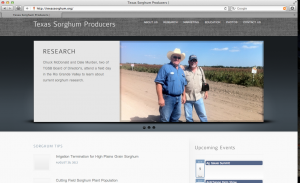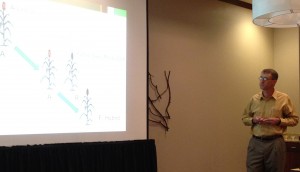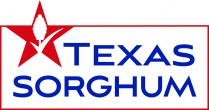Check Out Our Websites! – TGSP offers two new websites for you to find information. Texas Grain Sorghum Association (TGSA) which concentrates on state legislative issues can be found at www.texasgsa.com and Texas Grain Sorghum Board (TGSB) which enhances the sorghum through research, marketing and education can be found at www.texassorghum.org. The websites offers various information including: a list of our districts and the board of directors, commodity futures, USGC’s market perspective reports, Texas AgriLife Extension’s sorghum tips, archives of our newsletters, photos, upcoming events and more, and will soon have information on grain storage, sorghum 101, and reports on the marketing and research projects TGSB funds each year. If you would like to see something on our site, please let us know!
How Much Do You Spend on Food and How Secure is Your Food Supply? – A project sponsored by DuPont and collaborated by The Economist Magazine answers those questions and a whole lot more. The link http://foodsecurityindex.eiu.
DuPont Pioneer Sorghum Breeding – Cleve Franks, a sorghum breeder at the Pioneer facility in Plainview, Tex, updated Texas Grain Sorghum Board of Director’s on Pioneer’s sorghum breeding program at our August board meeting. Pioneer’s sorghum breeding program has three locations and are located in Plainview, Tex., Taft, Tex. and Manhattan, Kan. Their programs have 20,000-30,000 plots in their home nurseries and 8,000-10,000 plots in their winter nurseries. Their sorghum breeders’ implement trials at their home locations and also at 10-12 off-site locations, and in their spare time (ha) implement 20,000-30,000 yield trial plots each year. The goal of the breeding program is to stack favorable genes in new ways, where yield is always a consideration. It takes a typical program 9-10 years to get from a single male and female breeding line to sell commercially to producers. The trials of the hybrids usually account for six of those years. To go commercial, a hybrid must be superior to those that are currently released. Pioneer invests large amounts of dollars to sorghum research and are able to implement such technologies at the BOREAS mobile wind machine. Pioneer is also preparing for over-the-top grass control technologies and hopes to have their resistant sorghum varieties to the ALS herbicide released in 2015.
Sorghum Head Worm – Dr. Ed Bynum of Texas A&M AgriLife Extension Service in Amarillo recently released an update on sorghum head worms in the Panhandle region. He noted that the larvae of both fall army worm and corn earworms/cotton bollworms make up the caterpillars known as sorghum head worms. The sorghum head is most susceptible to damage during flowering to soft dough growth stages and infestation is usually worse in late-planted fields versus early planted ones. He also noted that loose, open type heads usually have a lower number of head worms than tight sorghum heads. Dr. Bynum suggests sampling your fields each week during the grain developing stages. Texas AgriLife has released a threshold calculator at http://bailey.agrilife.org to determine the economic effects and whether or not growers should consider using chemicals on these pests. For sampling techniques, please contact your county extension agent.
High Plains Farm-Forward Study – Dr. Darren Hudson, a professor and researcher in Agricultural Economics at Texas Tech University, visited with Texas Grain Sorghum Producer’s Board of Director’s last week and provided the results from the Farm-Forward economic study he did that shows the impacts of changes at the farm level on agribusiness supply chains and communities in the High Plains region since irrigated crops pump 90% of the water. Texas AgriLife Extension Service were also key researchers in the study. The study estimates the forward-linked (output of each forward-linked sector associated with the purchase of locally produced commodities) regional impacts for agricultural products and found that the total impacts of crop production outputs were $12,235 million, with a value added total of $4,662 million and agriculture employs 103,297 jobs in that region. The study also broke out each field crop in the region and also showed livestock effects. Sorghum production accounted for a total impact of $725 million outputs, had a value-added impact of $291 million and employed 5,988 jobs. Sorghum silage contributed to a total of $100 million outputs, had a value-added impact of $37 million and contributed for 621 jobs. The study is available to help with alternative water policy analyses within the region.












